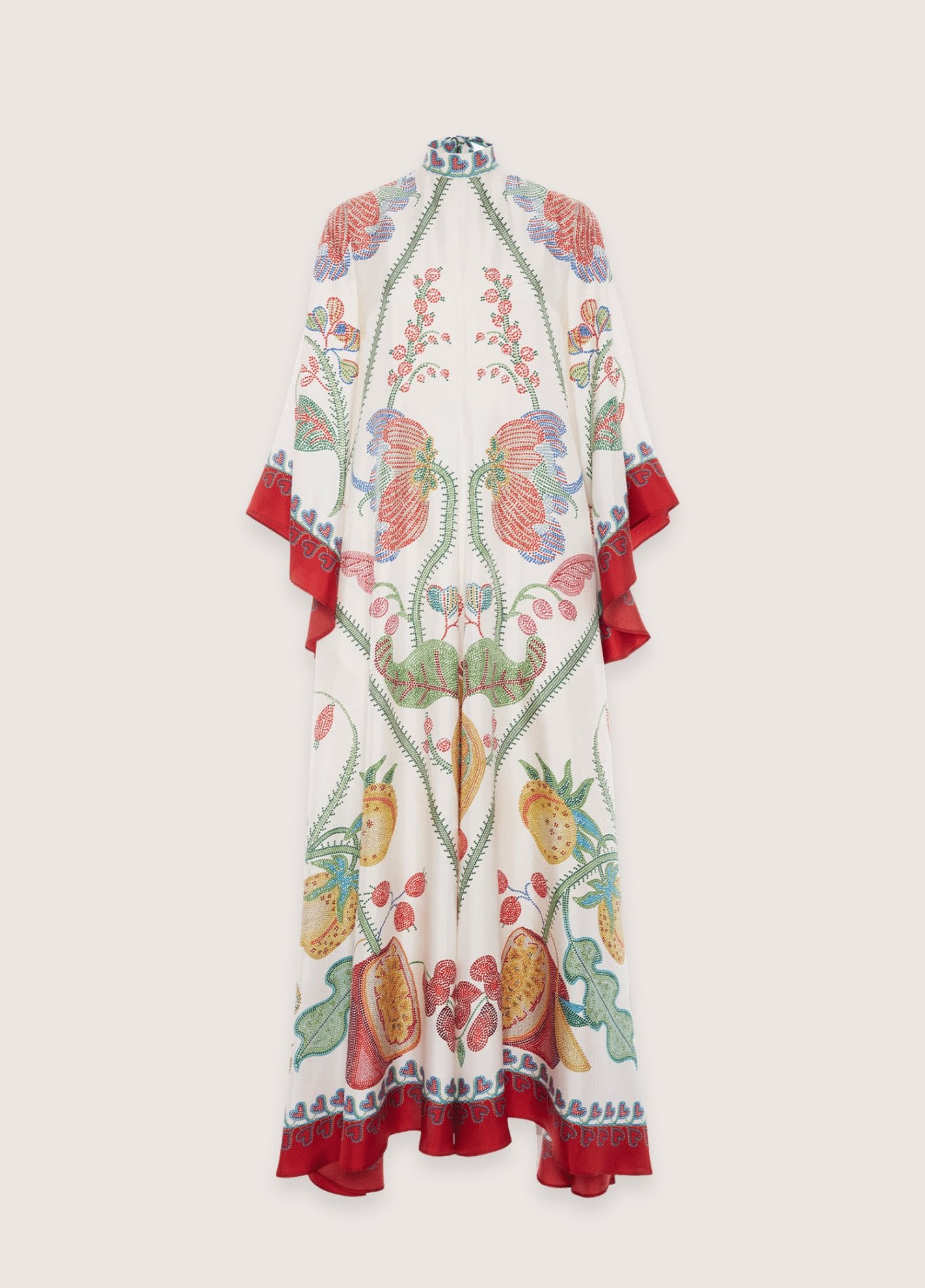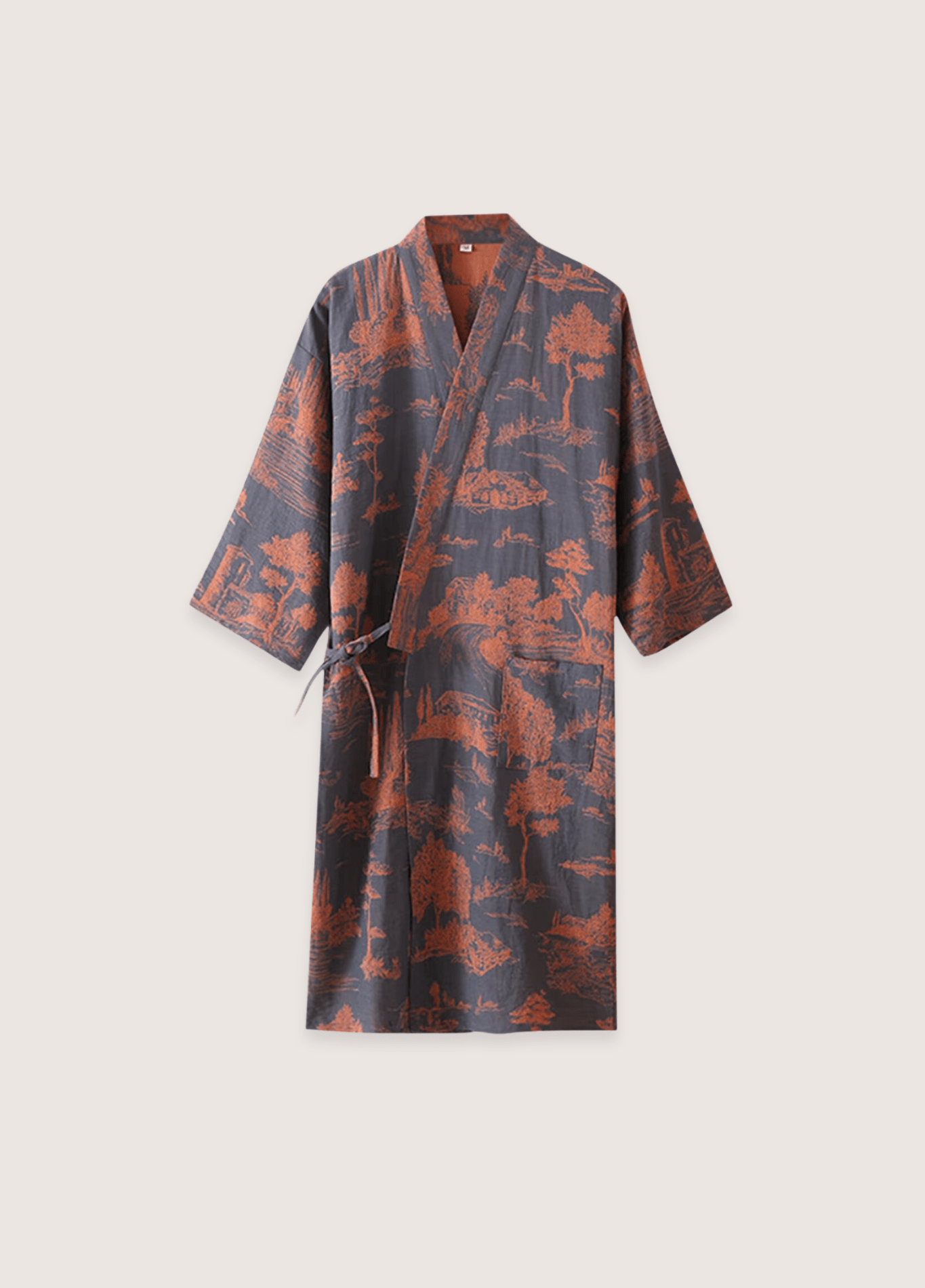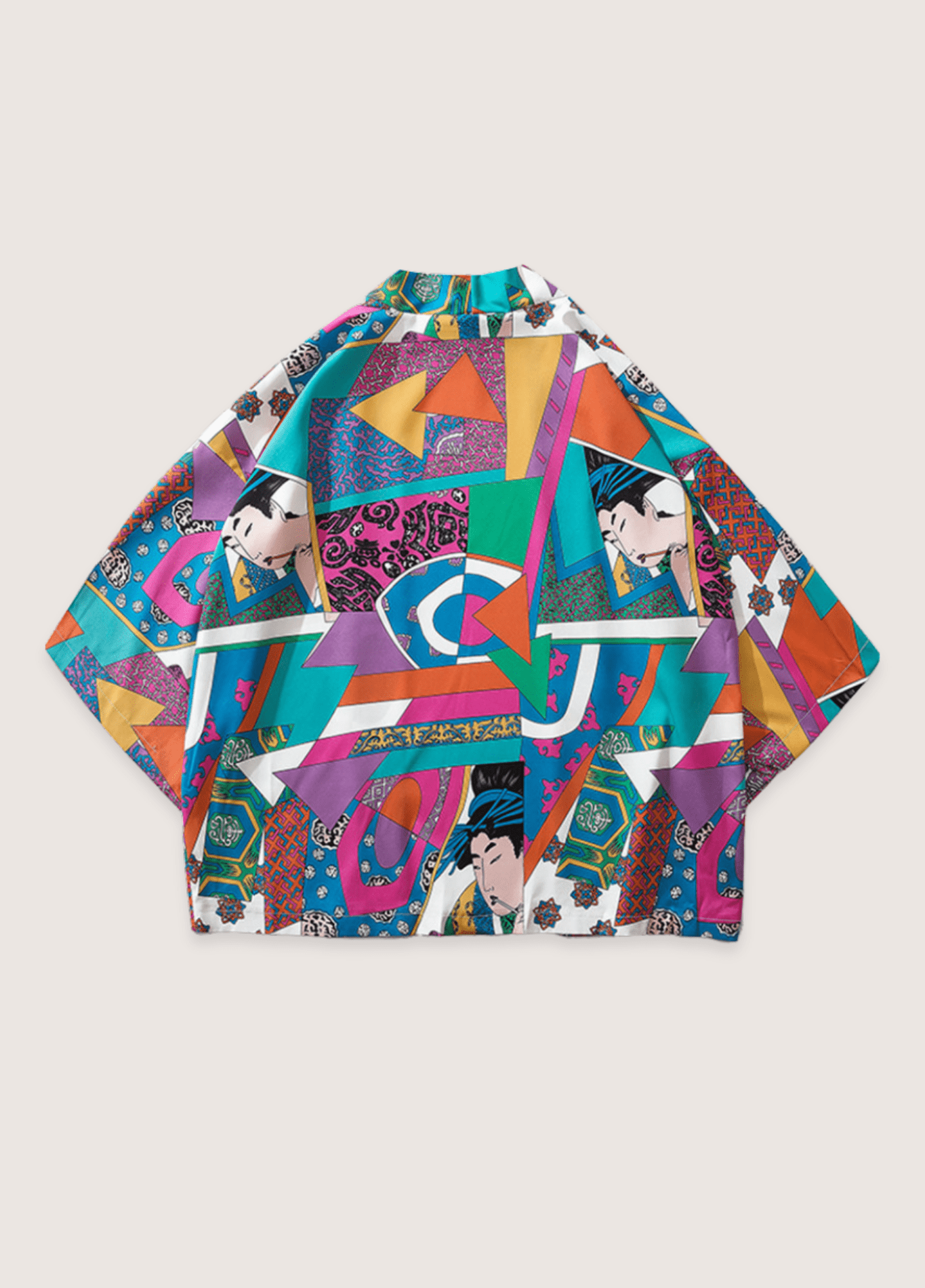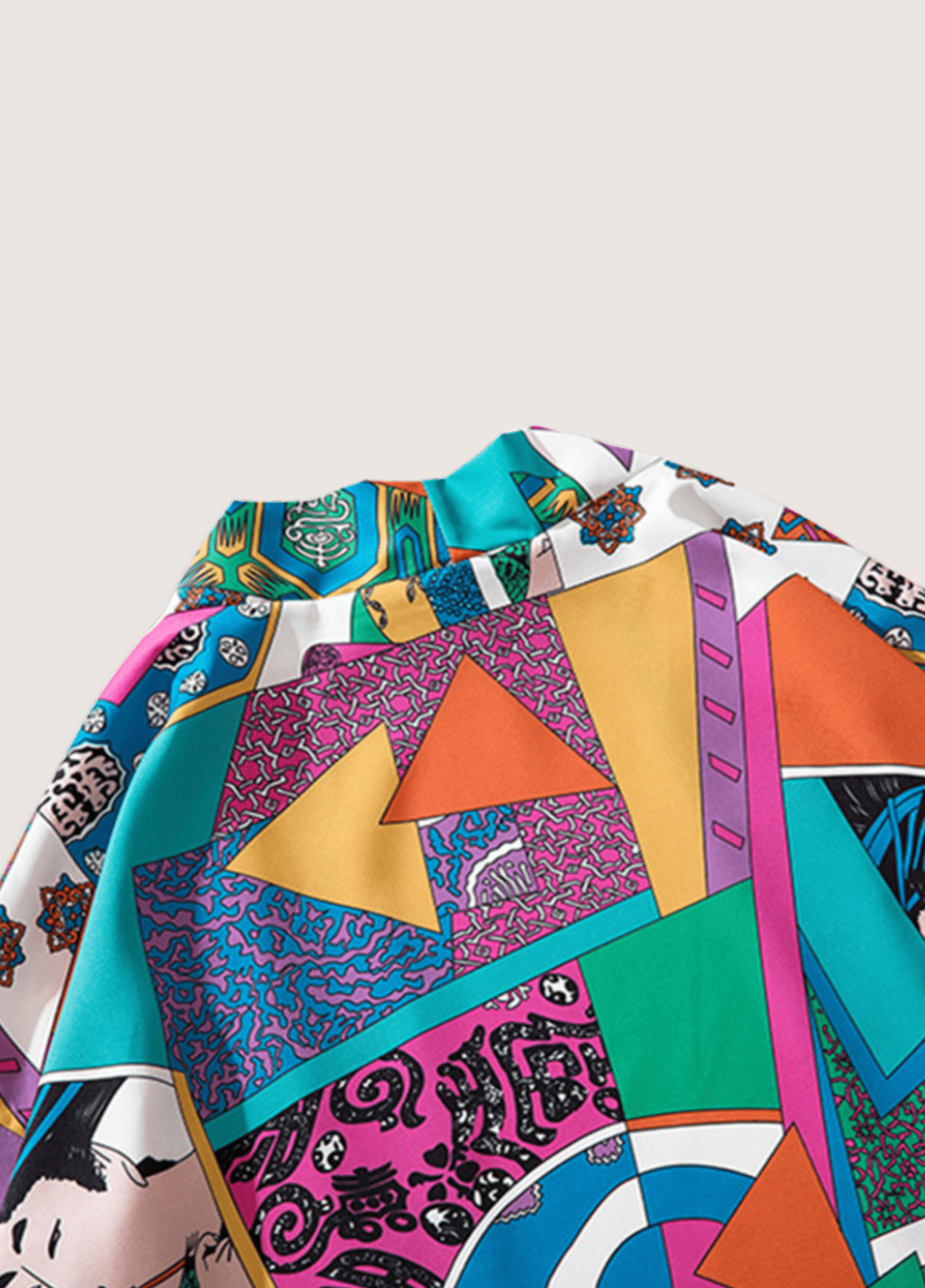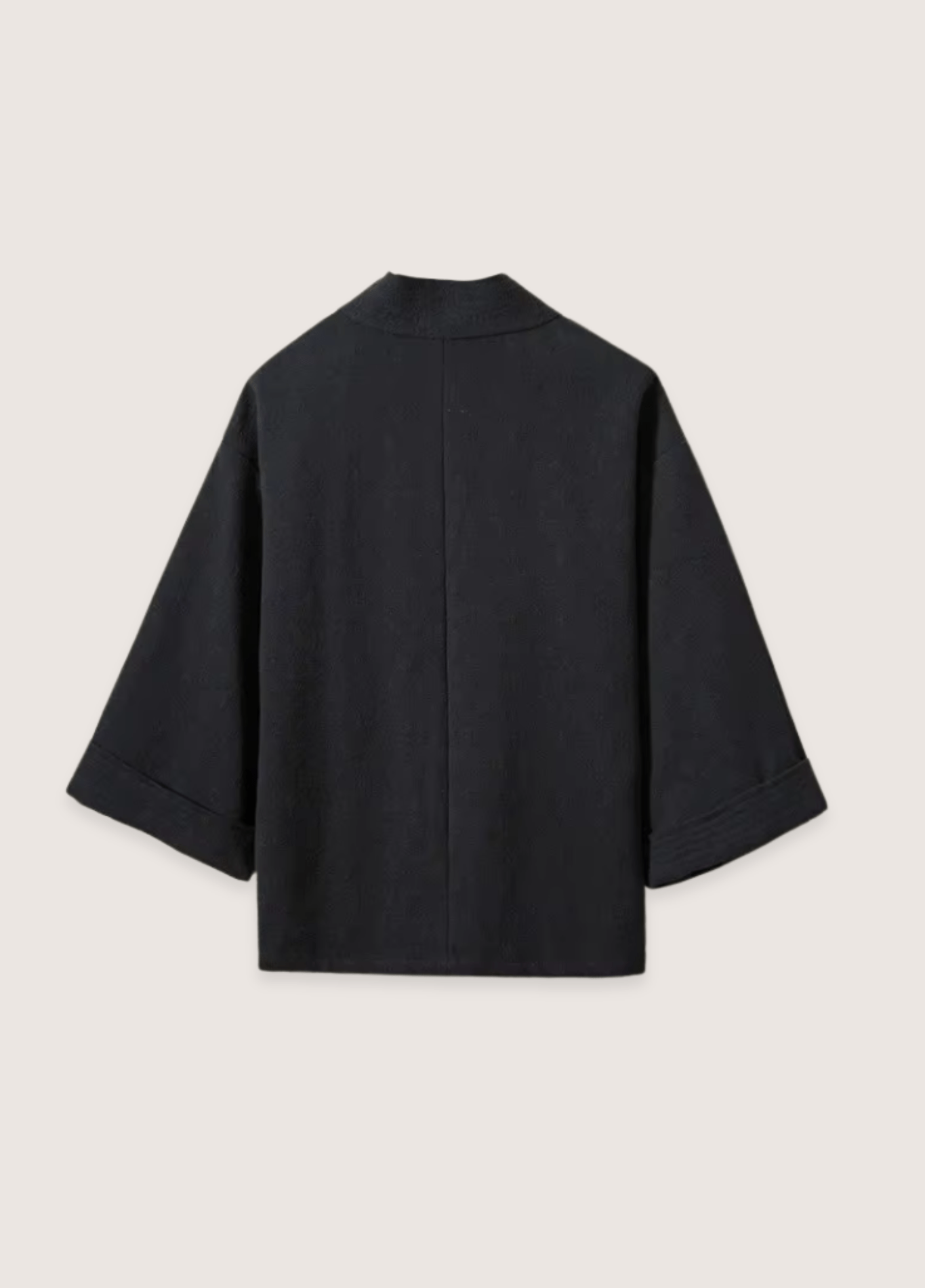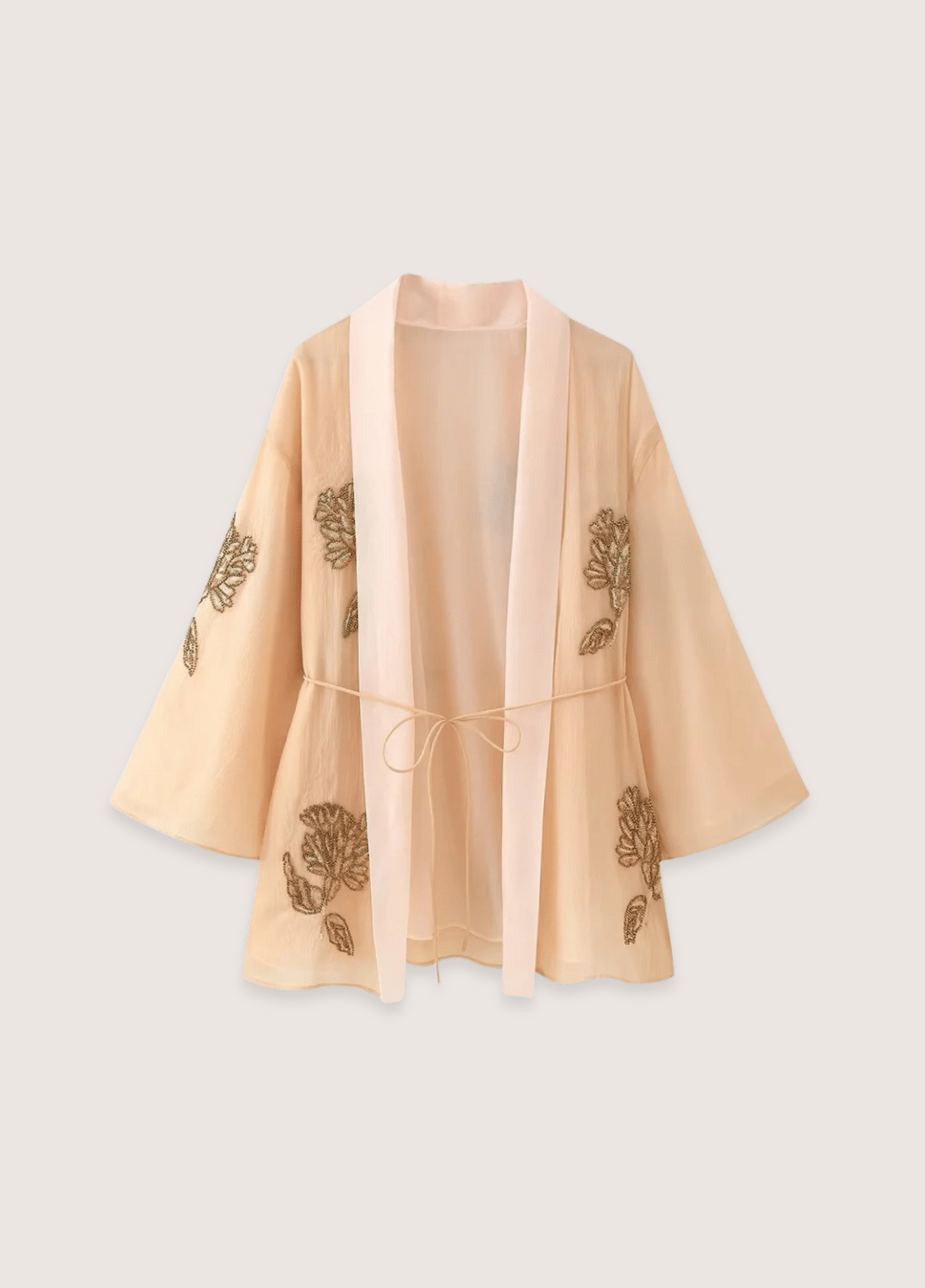Between age-old tradition and innovation, kimono underwear is being reinvented under the impetus of the greatest haute couture houses, merging Japanese elegance with French tradition in an unprecedented textile revolution.
Summary:
The metamorphosis of traditional dress codes
Haute couture reinvents kimono underwear
Seasonal trends under the kimono
Contemporary textile innovation
Innovative materials
Traditional tailor-made made to measure, modernized
Sustainability as a priority
Conclusion
The metamorphosis of traditional dress codes
The question of how to dress under the kimono now transcends the boundaries between tradition and modernity, creating a new era in the history of this iconic garment. In 2024, we are witnessing a true clothing revolution where the most daring designers are redefining the codes with unprecedented creativity. This fusion between Japanese essence and Parisian elegance does not just juxtapose two cultures; it creates a new language of clothing, rich and complex. Contemporary artisans draw on ancestral techniques while reinventing them with modern technologies, giving birth to creations that defy the imagination while respecting the spirit of the kimono.
Haute couture reinvents kimono underwear
Dior innovation
The House of Dior , under the visionary direction of Maria Grazia Chiuri , is shaking up the codes with a collaborative collection that redefines the very essence of fashion. This new line transcends the simple garment to become a true work of wearable art. The stretch silk bodysuits, created in the Parisian ateliers, recall the traditional lines of the hadajuban while infusing it with a subtle and refined Parisian sensuality. The embroideries, hand-crafted by the house's artisans, tell a story where the patterns resemble ancestral Japanese motifs and blend with the iconic codes of Dior. Each piece requires hours of meticulous work, combining traditional techniques and contemporary innovations. The Calais lace finishes are sublimated by silk threads dyed using centuries-old Japanese methods, creating previously unseen color gradients.
The Chanel Vision
Chanel ’s revolutionary approach to technical undergarments for a potential kimono perfectly illustrates this fusion of tradition and innovation. The house could develop, in collaboration with Japanese textile laboratories, fabrics that incorporate Chanel’s signature tweed into ultra-light, technical materials. The result would be stunning: undergarments that hug the body perfectly while maintaining the traditional silhouette of the kimono. The susoyoke would be transformed into an elaborate culotte skirt, with built-in thermoregulation technology. The artisans of Rue Cambon could create a unique folding system that allows the garment to adapt to every movement while maintaining its structure. Traditional buttons would be reinterpreted as blown glass beads, each containing a story that tells the tale of its creation.
Seasonal trends under the kimono
Kimono underwear fashion now follows the rhythm of the seasons, with a precision and creativity that reflects the expertise of the great French fashion houses. Each season brings its share of innovations, transforming the art of dressing under the kimono into a unique sensory experience.
Spring
The softness of spring is reflected in the choice of noble materials. Designers favor washed silk, whose touch recalls the delicacy of cherry blossom petals. Hadajuban (kimono underwear) are made of chirimen , a traditional crepe silk, whose waffle texture allows for better air circulation. Delicate embroidery, made with silk threads naturally dyed with sakura petals, adorns the collars and sleeves. The house of Issey Miyake adapts its famous pleating technique to these intimate pieces, creating textiles that harmoniously hug the shapes while ensuring optimal freedom of movement.
Summer
With increasingly hot summers, textile innovations are focusing on thermal comfort. Sha , a traditional openwork ramie textile, is experiencing a revival thanks to its exceptional ventilation capacity. Kyoto manufacturers are incorporating natural bamboo fibers into their weaves, taking advantage of the material's antibacterial and thermoregulating properties. The structure of ro , an ultra-light silk gauze woven using ancestral techniques, is optimized to create zones of natural micro-ventilation. These technical textiles are inspired by traditional patterns while meeting contemporary comfort requirements.
Autumn
Autumn is all about warm, noble materials. Artisans combine traditional know-how with modern, high-performance fibers. The autumn juban is made of silk lined with ultra-fine organic cotton , providing warmth and breathability. Kyoto dyers excel in the art of katasome (stencil printing), creating patterns inspired by maple leaves from natural pigments. The shibori technique (resist dyeing) is used to create subtle textures that capture air and increase thermal insulation.
Winter
Winter demands a special adaptation of the traditional hadajuban. Artisans incorporate layers of silk and cotton using the Japanese sashiko quilting technique, creating natural insulation without excess bulk. Superfine merino wool, worked using traditional Japanese techniques, provides warmth and finesse. Silk chirimen linings are woven with a honeycomb structure that naturally traps warm air. Traditional ties are perfected for a precise fit, using silk cords braided using the kumihimo technique .
Contemporary textile innovation
Advances in textiles respect tradition while incorporating proven technologies. Modern technical fabrics like Uniqlo’s AIRISM , developed specifically for the Japanese market, draw inspiration from the properties of traditional underwear to create high-performance materials that respect tradition.
Innovative materials
Contemporary manufacturers use improved natural fibers, such as silk treated for better moisture resistance or organic cotton with extra-long staples for exceptional softness. Traditional weaving techniques are optimized with modern looms, creating more consistent fabrics while retaining their artisanal character.
Traditional tailor-made made to measure, modernized
The tailoring workshops combine traditional measuring techniques with modern methods of pattern making. The artisans use custom patterns created from precise measurements, while respecting the traditional proportions of the kimono. Each piece is tried on and adjusted according to the specific needs of the customer.
Sustainability as a priority
The kimono industry is committed to an eco-responsible approach. Traditional natural dyes are preferred, using plant pigments such as indigo or madder. Fabric scraps are recycled using traditional patchwork techniques (boro) or transformed into accessories.
The workshops adopt sustainable practices, such as recovering dye water and using energy-efficient production methods. Traditional furoshiki (cloth) packaging replaces disposable packaging.
Conclusion
The art of kimono underwear evolves with a delicate balance between tradition and modernity. Innovations focus on improving comfort and durability, while preserving the artisanal techniques that make this clothing heritage so rich.


